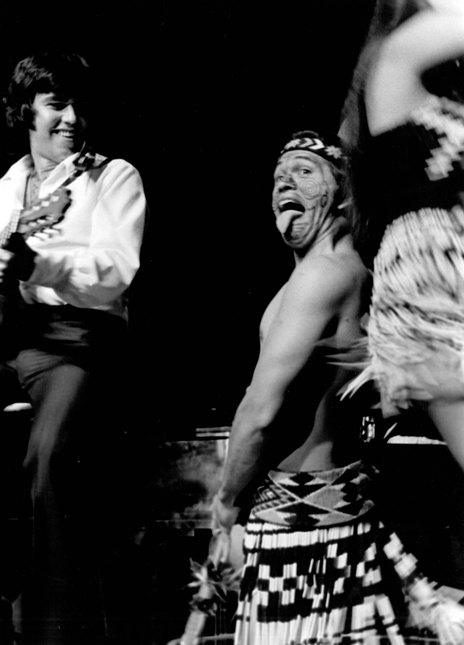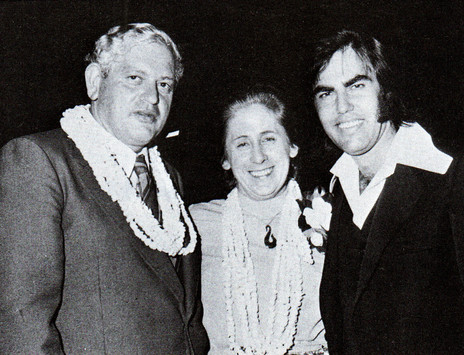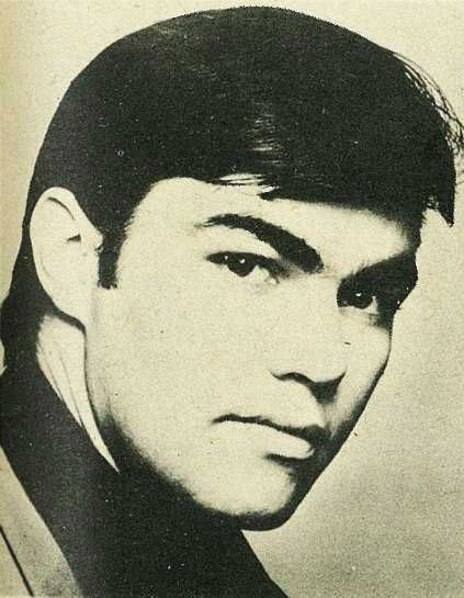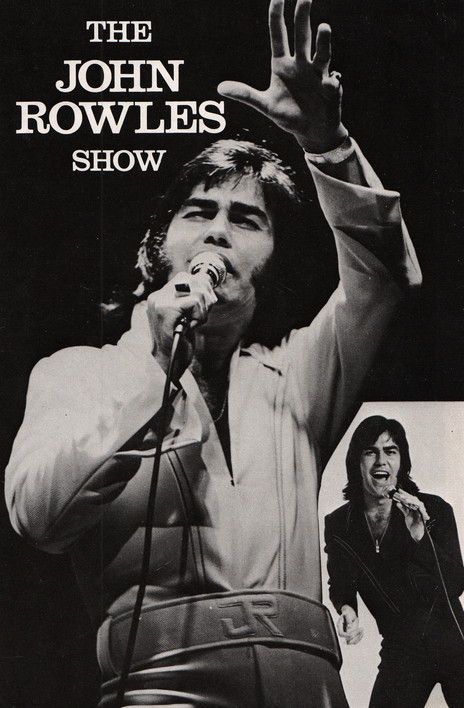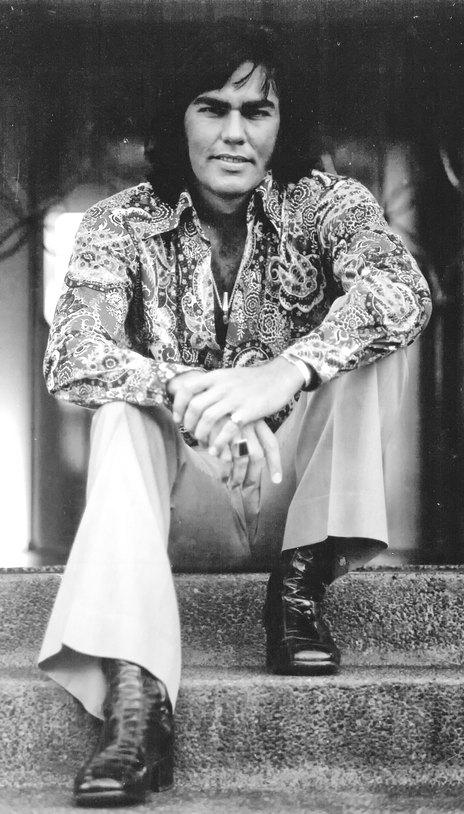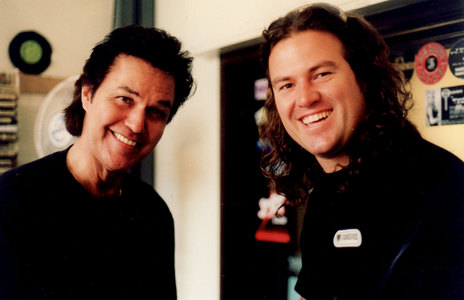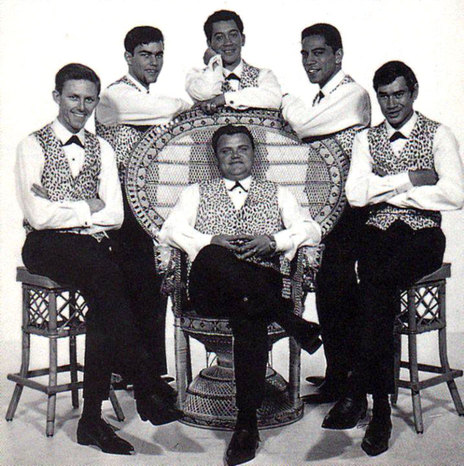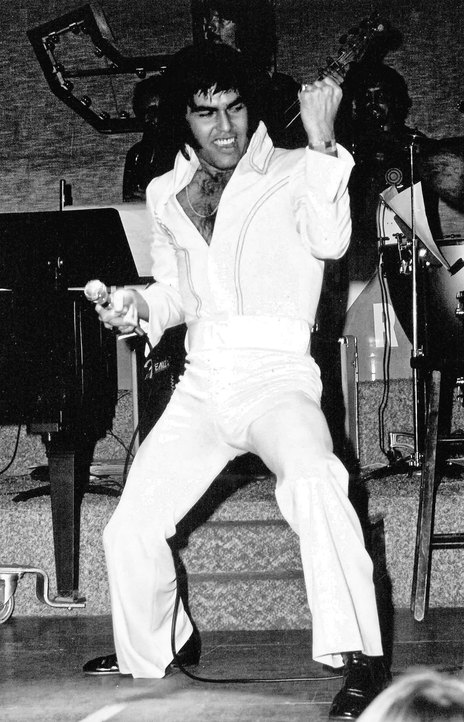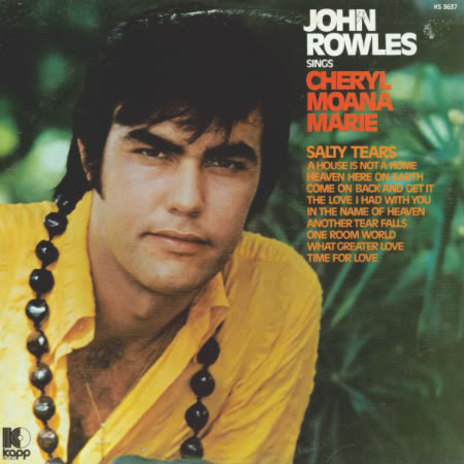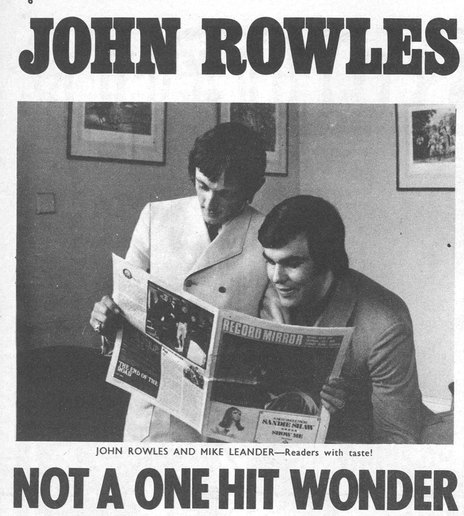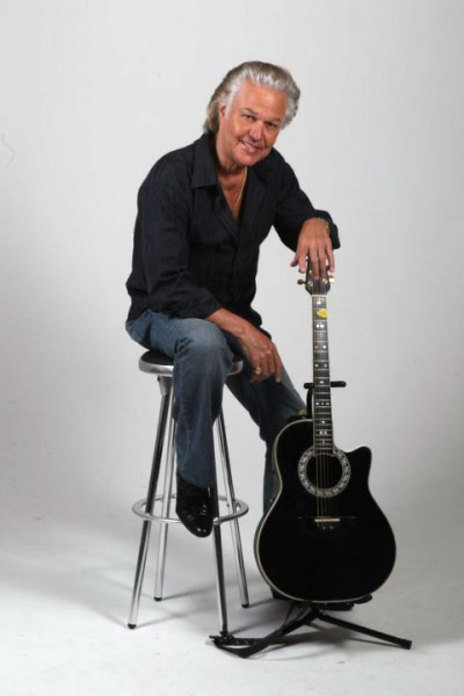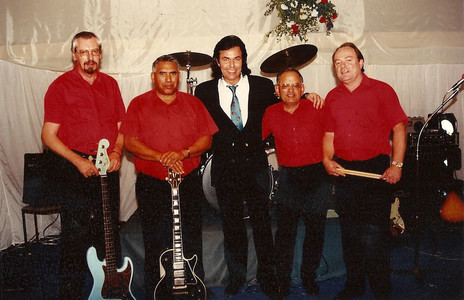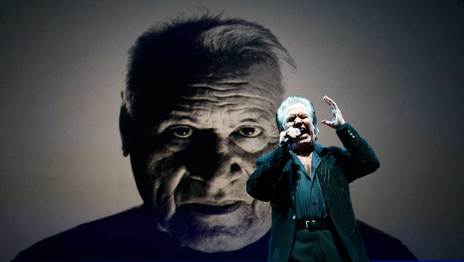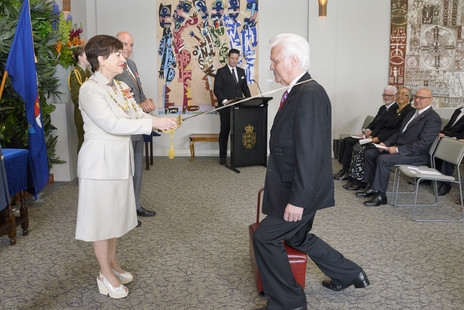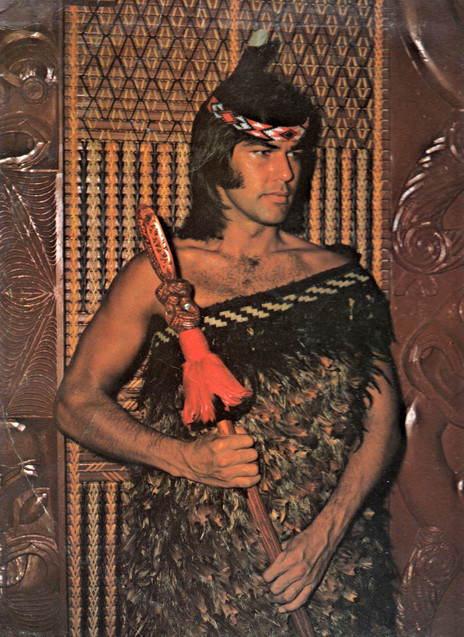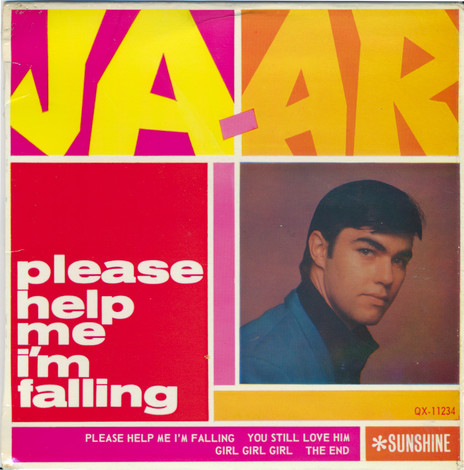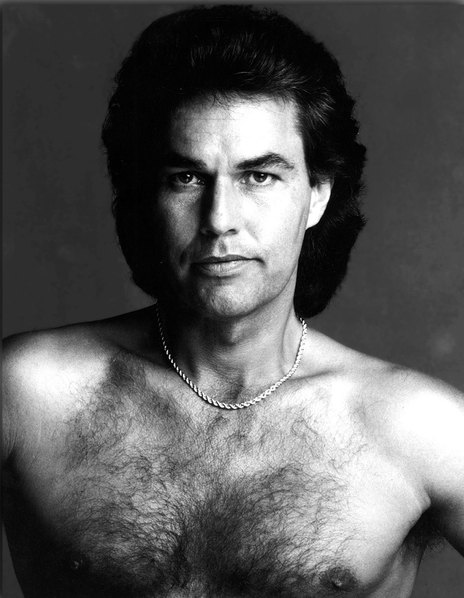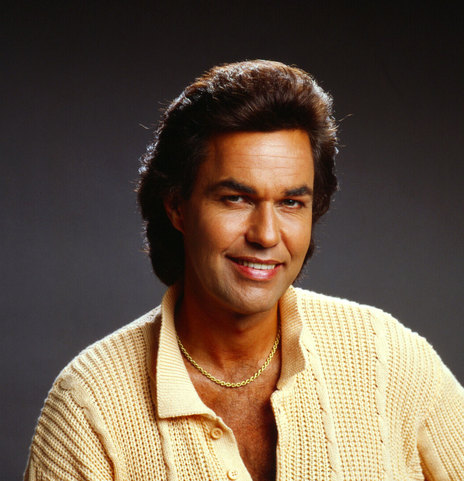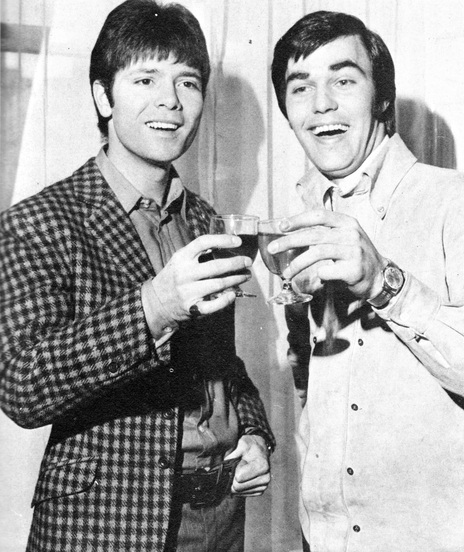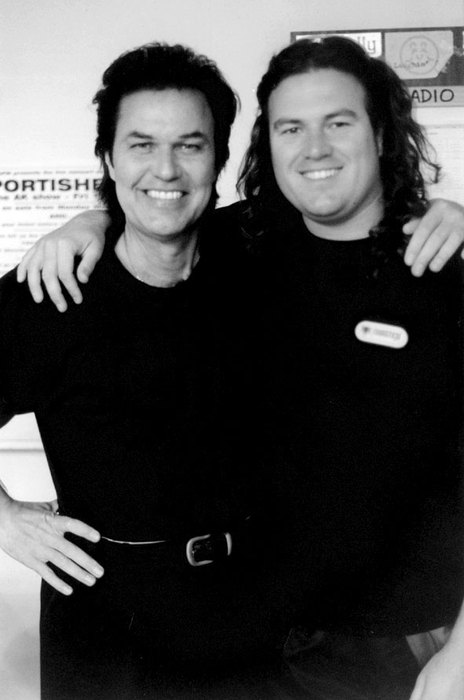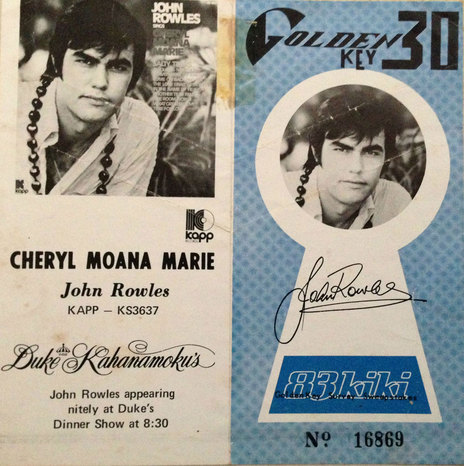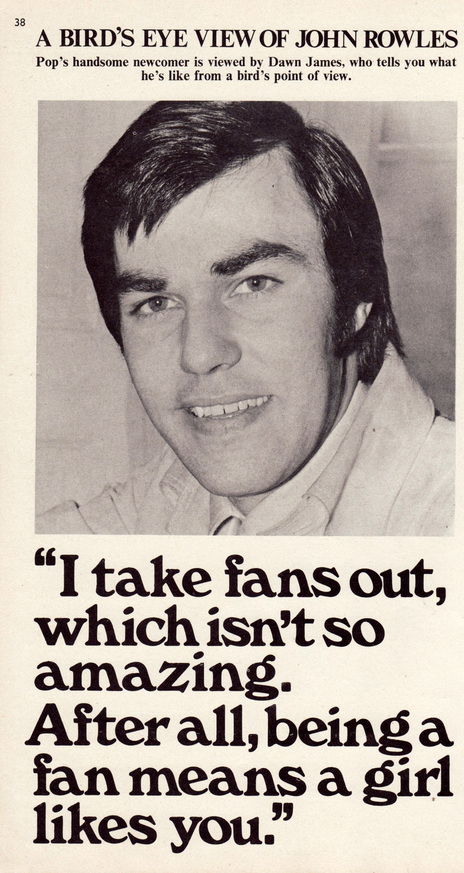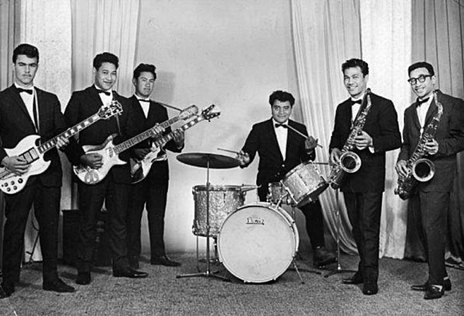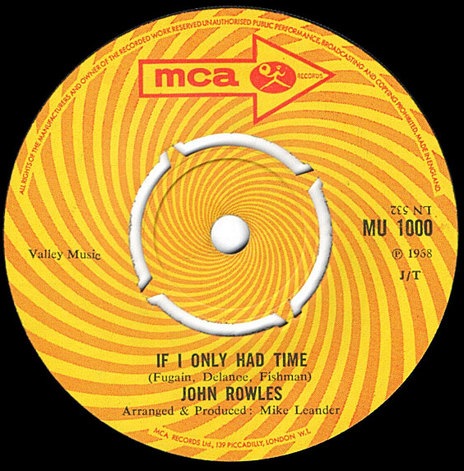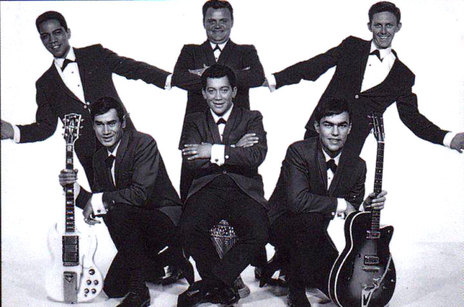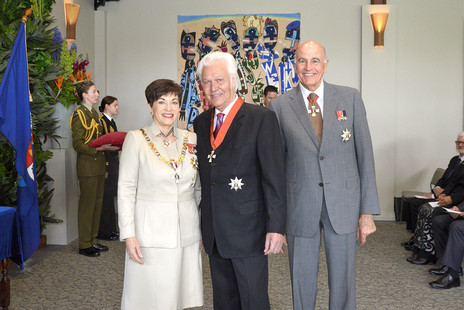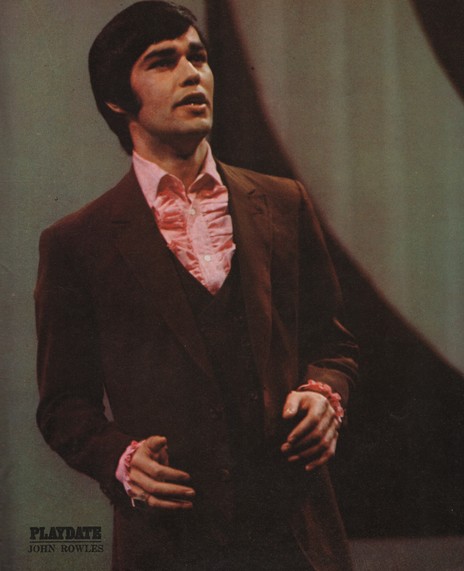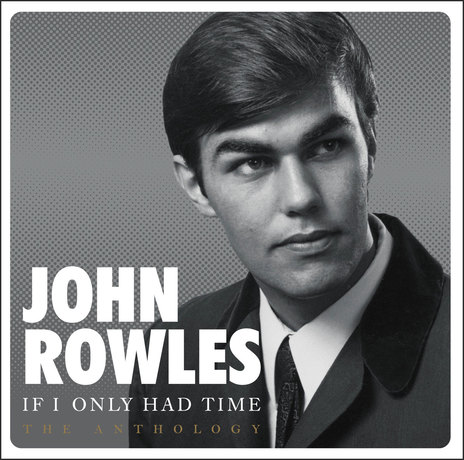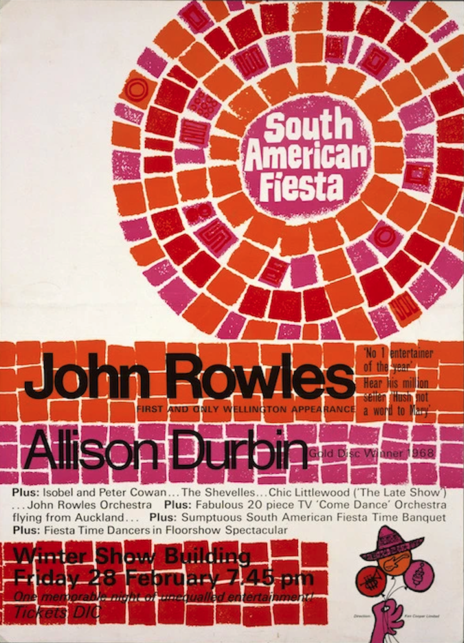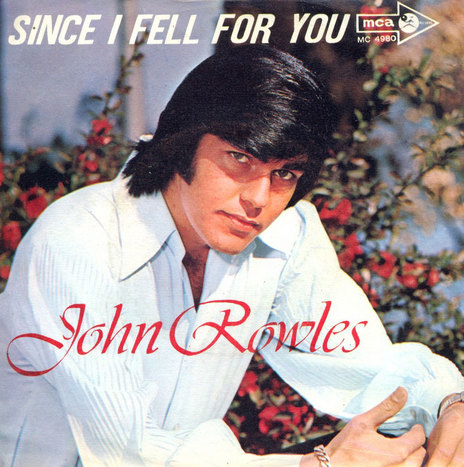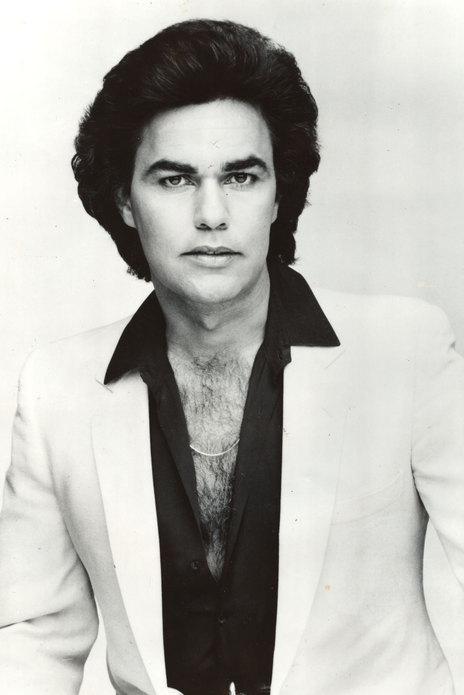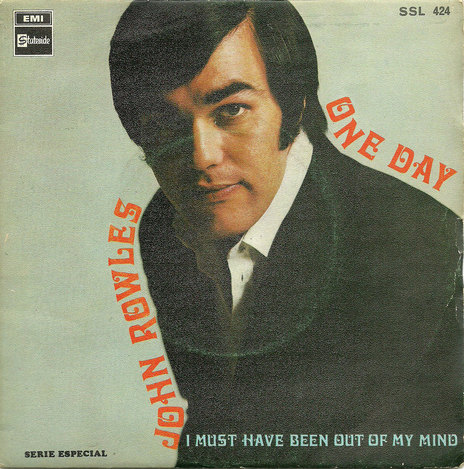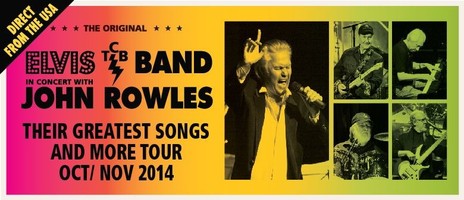The crowd are enjoying themselves. His mate Winston Peters, another 60-something with unnaturally luxuriant hair, sits near the front, happy not to be the centre of attention.
Rowles takes a long-stemmed red rose from a vase on stage and presents it to a woman in the audience. He takes another rose and calls up a loyal fan who has travelled from Queensland for this rare live show.
The patter rolls off his tongue, testament to half a century of doing this stuff for a living on stages large and small around the world.
The voice is still silky and powerful, his phrasing giving shape to the lines. The songs, all done thousands of times, stir memories.
A couple of nights later he’s playing a couple of numbers in a showband tribute concert, to a mainly Māori audience. He’s followed by Dennis Marsh, who is outselling every other New Zealand act with his collections of country nostalgia.
Rowles surges back on stage in the middle of one of Marsh’s numbers, grabs a microphone, sings a riff, cracks a joke, then disappears backstage laughing, the pretender put in his place. You don’t get to the top without a giant ego.
The boy from Kawerau
In Kawerau, where Rowles was born on March 26, 1947, the choice of career was planting trees, cutting them down, or turning them into paper.
It was when he was sacked for turning up late at the mill that Rowles decided a life in music offered more.
He honed his guitar skills playing along to Chet Atkins and Shadows records, so he got some mates together to form an instrumental band, The Kawerau Shadows, and took on the Bay of Plenty circuit.
He loaded up his Ford Prefect and headed north to Auckland where he auditioned at the Picasso club.
He would slip over to Rotorua to see the showbands, where his ambition to become a singer was fired by seeing the likes of Rim D Paul with the Quin Tikis, Nuuki Waaka with the Deuces, and the Howard Morrison Quartet.
“After one of these nights in Rotorua, I went home and said to Mum, ‘I’m going to Auckland to try my luck at some of the big city show bands playing guitar or singing’,” he says in his autobiography, If I Only Had Time.
After spending Christmas of 1963 with his parents, he loaded up his Ford Prefect and headed north to Auckland where he auditioned to join The Chevronaires, the resident band at the Picasso club.
A performance of ‘Guitar Boogie’ followed by a rendition of Elvis’s ‘One Night With You’ won him the gig, but it didn’t last long.
Taking on Australia
By March, he and fellow band member Eddie Low were on their way to Melbourne as “the New Zealand Beatles”, wearing Beatle wigs and singing Lennon/McCartney tunes for two shows a night at the Riverside Inn.
When their six month contract ended they shifted to Sydney, looking for opportunity in Kings Cross. They found it when they walked into the Civic Hotel and found former Chevronaires drummer Trixie Willoughby wielding the sticks behind The Ding Dongers.
Band leader Tricky Visser Delano offered them a job and the band, renamed The Sundowners, started making an impact on the Miller hotel circuit.
That band, not to be confused with Sonny Day’s New Zealand outfit of the same name, made one single with Rowles fronting, the Digger Revell-produced ‘The End (Of A Rainbow)’, a cover of an Earl Grant song. By this time Rowles had been picked by managers Lonnie Gordon, and Graham Dent, another New Zealand expatriate, who rebranded him as JA-AR.
Dent, who was an acknowledged master of the media stunt, released the single under this name, after first getting him placed on television shows such as Bandstand and Six O’Clock Rock as The Secret.
There was plenty of television and concert work but only one more record to show for the effort, a cover of the country standard ‘Please Help Me I’m Falling’, released – like the first JA-AR single – on the indie Sunshine label.
UK success
After a year of this Rowles got a better offer from Peter Gormley, an Australian who had a good record of taking Aussie stars like Frank Ifield and the Seekers to England, as well as managing Cliff Richard and The Shadows.
after Rowles appeared on the UK television show Top of the Pops, ‘If I Only Had Time’ peaked at No.3
Gormley had just lost Ifield and was looking for a replacement. He invited Rowles to London to join the ranks of big ballad singers like Engelbert Humperdinck and Tom Jones, who were holding their own in the charts against the psychedelic pop unleashed by the Summer of Love and Sgt Peppers Lonely Hearts Club Band.
Gormley signed Rowles with MCA, an American label that was about to launch in the UK. He had a French ballad, ‘Je n’Aurai Pas le Temps’, translated into English as ‘If I Only Had Time’, and got the experienced Mike Leander in to arrange the song.
Released on February 17, 1968, it entered the UK charts at No.40 four weeks later, moved higher after Rowles appeared on the television show Top of the Pops, and peaked at No.3 behind Cliff Richard’s ‘Congratulations’ and Louis Armstrong’s ‘Wonderful World’.
The follow-up, ‘Hush... Not A Word To Mary’, was released in June and made it to No.12, but the third single ‘The Pain Goes On Forever’ failed to chart in the UK, and the fourth single ‘Say Goodbye’/‘M’lady’ b/w 'All My Love's Laughter' got lost in the Christmas rush, although both sides charted in several other countries.
‘M’lady’ reached No.1 in New Zealand in early 1969 while John returned home on a triumphal tour, which included a civic reception in Kawerau.
The next single, ‘One Day’, failed to chart in either the UK or New Zealand, but hit in South America, Italy, Spain, Germany and Hong Kong.
‘Cheryl Moana Marie’ turned out to be the song that opened the door to the United States
Cheryl Moana Marie
In late 1969 Gormley suggested Rowles write a song to represent New Zealand in an International Song Festival in Rio de Janeiro. ‘Cheryl Moana Marie’ turned out to be the song that opened the door to the United States, reaching No.64 there, even though it failed to chart in the UK.
That gave Gormley the confidence to book Rowles into a four week contract opening for Connie Stevens at the Flamingo hotel in Las Vegas, for $120,000. Rowles then won another $100,000, went back to London and bought a Jaguar.
Hawaii club scene
After a trip back to New Zealand to bury his father and a gig at the 1970 Miss Universe competition in Miami, Gormley booked Rowles into King Kahanamoku’s night club in Honolulu.
That was it. The climate, the money, the lifestyle, and one particular woman were enough to tempt him to stay. In hindsight Rowles admits it wasn’t a good career move. Without Gormley behind him, the prospects of major success in America slipped away.
The songwriters like Mitch Murray and Peter Callender who’d been fuelling his career gave their compositions to other acts, with MCA signing Tony Christie and having a string of big hits throughout the early 70s with Murray/Callender songs such as ‘Las Vegas’, ‘I Did What I Did For Maria’, ‘Avenues and Alleyways’ and ‘Don’t Go Down To Reno’.
With new manager Kimo Wilder McVay, Rowles bought King Kahanamoku’s night club and a pair of white vintage Rolls Royces.
While the relationship looked good on paper, with well paid residencies in Hawaii, Las Vegas and other resort centres, Rowles eventually queried the amount of debt taken on and his manager’s habit of dropping the night’s take on the gaming tables.
In 1974 Rowles was dropped by MCA subsidiary Kapp, which was trimming its roster so it could put its efforts into Elton John. That precipitated his split with McVay, and the singer found himself with no international manager and no record company.
Tours in New Zealand in 1974 and 1975 drew crowds but mostly just covered earlier outstanding debts to promoters. The former tour did produce the New Zealand only release Live At Home, a double album on Pye that sold well and would be reissued by EMI in 1977. However the income from that album also went towards those debts.
Rowles says by the time he left Hawaii in 1978 he was broke. He ended up staying with a friend in San Jose, looking for a record deal and a song that would revive his career.
‘Tania’ topped the New Zealand chart for four weeks in April 1978
Thinking back to his biggest international hit, made by merging the names of his sisters Cheryl Moana and Tania Marie, he went to work on the name Tania, as in “this song is for you.”
Coming back with Tania
‘Tania’ topped the New Zealand chart for four weeks in April 1978, and his homecoming tour on the back of it replenished his bank account. The subsequent album, This Is My Life, went gold in New Zealand and did well in Australia.
It set him up for a return to Hawaii and the Australian Leagues club circuit, which he describes as the cabaret singer’s mecca. He ended up living in Australia for 20 years.
In 1980 he was made a member of the Order of the British Empire in the New Year’s honours list for services to entertainment and New Zealand interests in the United States, and was also made an “ambassador" by the Governor of Hawaii for being an important link between Hawaii and New Zealand.
He also recorded Rhythm of the City, an up-tempo album of lush disco-soul produced by HB Barnum, who had worked with Frank Sinatra, Lou Rawls, The Supremes, Aretha Franklin, Little Richard and others.
In 1981 he was back in New Zealand to sing at a Royal Command Performance for Queen Elizabeth and the Duke of Edinburgh.
Howard Morrison’s performance of ‘How Great Thou Art’ at that concert became a No.1 hit and his signature song. Rowles’s contribution, a country-Polynesian-style ballad arrangement of ‘Island in the Sun’, reached No.4 and led to him releasing an album of new material, Another Chapter.
By this stage he was paying for his own albums to be produced and released, an expensive gamble he felt was necessary to keep making fresh material available.
The decade also saw a mis-step when Rowles signed up to do a television ad for Gerard Roofing. The subsequent commercial famously saw the singer chanting "G-G-G-Gerard" on New Zealand's screens for years and, he said in the 2008 Secret Life Of John Rowles documentary, caused some embarrassment to himself and distress to his mother when people with stutters began ringing her house to complain.
The Very Best of John Rowles and In The Portrait of My Mind were released in 1984 and Now And Then the following year.
Rowles says half of the latter album was recorded in Nashville with legendary country producer Jerry Crutchfield because he felt by the mid-1980s, the world capital of country music seemed like the only place where a big ballad singer was treated as a serious musical proposition.
Other albums followed including Pearls, Love Songs, and In My Wildest Dreams, but he was missing the elusive hit single.
A return to Hawaii in 1988 for a residency at the Hilton Hawaiian Village on Waikiki Beach led to Rowles recording another version of ‘Island In The Sun’ and an album, Island, but he couldn’t get a US release for it.
In 1990 Rowles’s show at Auckland’s new Aotea Centre was turned into a television special and a double live album.
From a Distance, a 1991 album of inspirational gospel songs, made the Australian Top 20 and sold about 100,000 copies, mostly at concerts.
In 1992 he put out an album called Soul And Affection, which featured versions of concert favourites like ‘Smoke Gets In Your Eyes’, ‘Sexual Healing’ and ‘MacArthur Park’, but it was six years before his next self-financed album, Giver and Taker of Love Tonight.
Rowles returned to live in New Zealand in the mid-2000s after his separation from his wife and mother of his two sons, Deborah-Leigh Ashton.
In 2008 The Secret Life Of John Rowles, an open and revealing documentary on Rowles’s life, his career highs and low-points, was broadcast in New Zealand.
In 2011 Rowles did what he called his “Final Bow” tour throughout New Zealand. While that may have been the end of the big concerts, the old trouper will find the temptation to keep singing the big songs irresistible. In 2014 he undertook an ambitious nationwide tour performing the songs of Elvis Presley (and John Rowles) with Presley’s “TCB Band” (Ronnie Tutt, James Burton, and Glen D Hardin).
In 2018, Rowles was named Knight Companion of the New Zealand Order of Merit for services to entertainment. Arise, Sir John.
